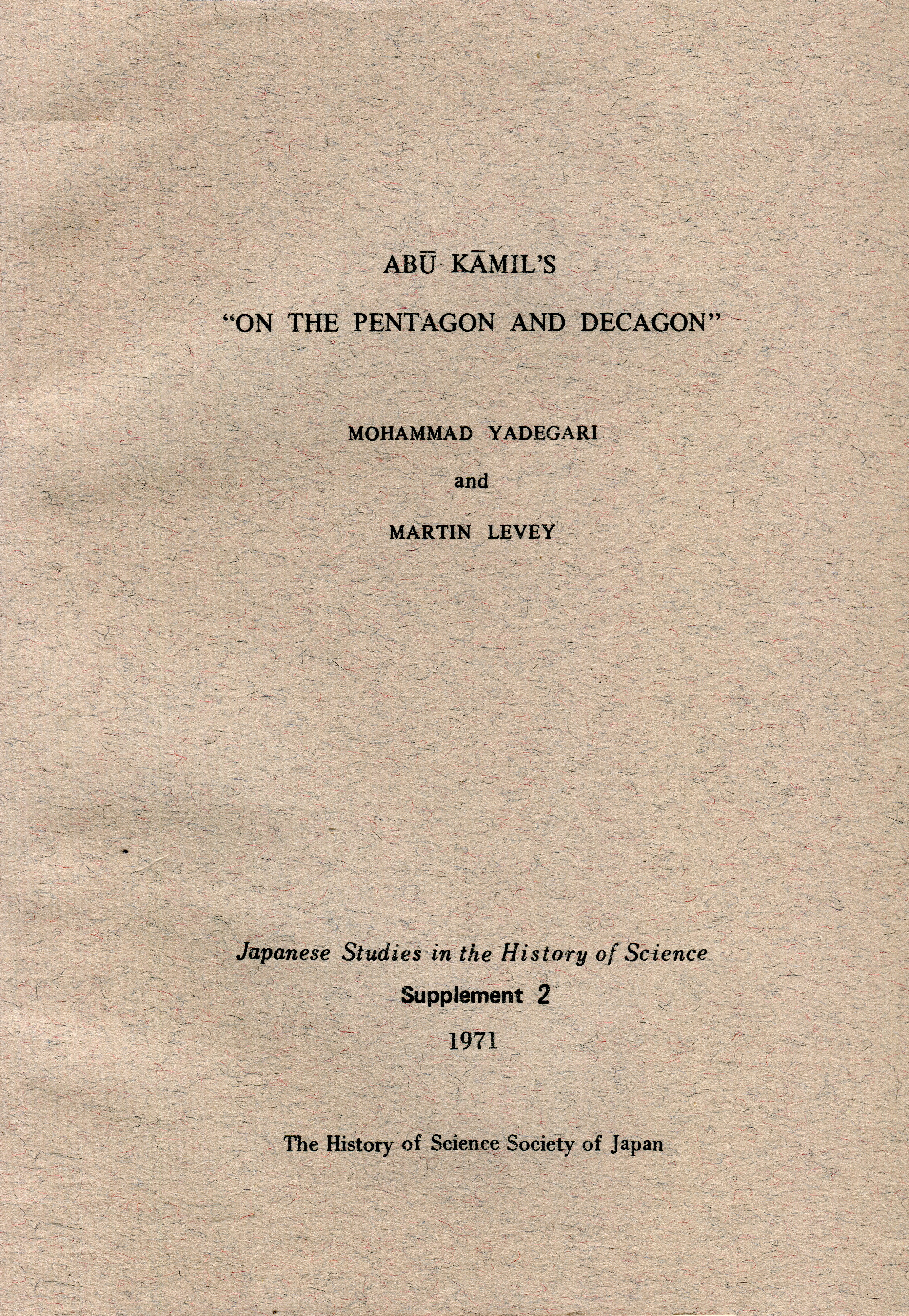
|
Abū Kāmil’s “On the Pentagon and Decagon”
Mohammad Yadegari and Martin Levey
Japanese Studies in the History of Science, Supplement 2 / 1971.
The History of Science Society of Japan, Tokyo
54pp
|
Abū Kāmil’s “On the Pentagon and Decagon”
by Mohammad Yadegari and Martin Levey [1]
Abū Kāmil Shujāc ibn Aslam ibn Muhammad ibn Shujāc (ca. 850-930 A.D.) was known as al-Hasib al-Misrī, “the reckoner from Egypt.” He is, after al-Khwārizmī (ca. 825), the earliest algebraist of the Islamic Middle Ages whose writings are extant [2]. His work is important in the history of mathematics for a number of reasons. He was among the early Muslim algebraists whose work in algebra was extensively used by Europeans. It has been established that Leonardo Fibonacci (of Pisa) had access to the treatises of abū Kāmil. Leonardo was aware of “On the Pentagon and Decagon” of abū Kāmil and used it in his Practica Geometriae. There is proof that Leonardo used dozens of abū Kāmil’s problems in his algebra [3]. From “On the Pentagon and Decagon”, Leonardo used seventeen of its twenty problems carrying over the exact nvimber facts . [4] In previous works, Levey has shown that abū Kāmil was much interested in developing a mathematical methodology which combined the more abstract Greek methods with more pragmatic procedures of the Babylonian and Egyptian algebraists. Evidence for this has been established from his Algebra and his Indeterminate Equations [5]. Further proof is in “On the Pentagon and Decagon” to be discussed.
[1] State University of New York, Albany, New York.
[2] M. Levey, The Algebra of Abū Kāmil (Madison, 1966) pp. 3-6; Encyclopedia of Islam I, I32-I33 (I960).
[3] Ibid.. pp. 2I7-22O for elementary algebraic problems
used by Leonardo from abū Kāmil’s Algebra.
[4] cf. B. Boncompagni, ed. of Scritti di Leonardo Pisano (Roma, 1857-1862) Practica geometriae vol. II, pp. 207-216. cf. also H. Suter, Bib. Math. 10, 38-42 (1909-10) where Leonardo’s solutions are compared with those of abū Kāmil.
[5] M. Levey, in press with Atti della Accademia Nazionale del Lincei (Roma).